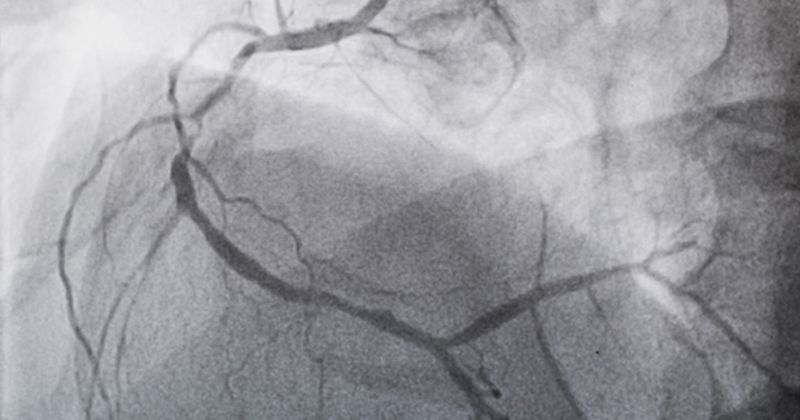'Advanced vascular imaging' drives revision to ACR/EULAR vasculitis classification criteria
The American College of Rheumatology and EULAR have updated classification criteria for five types of large- and small-vessel vasculitis, driven in part by advances in diagnostic imaging, according to presenters at ACR Convergence 2021.
Peter Grayson, MD, MSc, chief of the Vasculitis Translational Research Program at the NIH’s National Institutes of Arthritis and Musculoskeletal and Skin Diseases (NIAMS), presented the criteria for large-vessel disease, including giant cell arteritis and Takayasu’s arteritis. Raashid Luqmani, MD, professor of rheumatology at the University of Oxford, in England, presented on the criteria for small-vessel diseases granulomatosis with polyangiitis (GPA), microscopic polyangiitis (MPA) and eosinophilic GPA (EGPA).

The last set of criteria for large-vessel disease was published in 1990, according to Grayson, and developed before the “widespread use of advanced vascular imaging” modalities, such as positron emission tomography, noninvasive angiography and vascular ultrasound.
“We know that things have changed over time in the management of these diseases; as such, there are now limitations of the 1990 ACR classification criteria,” he said. “They served a purpose for several decades, but we think it is time for an update. With the incorporation of imaging into clinical practice, we are starting to widen the spectrum of the clinical phenotype of these conditions. We would like to see if we can incorporate some of these practices into new criteria.”

He highlighted advances in diagnostic imaging, as well as a deeper understanding of where GCA can occur as key reasons for the update.
Using a methodology that included 2,068 patients, an expert panel and more than 1,000 data elements, the group arrived at its classification criteria. “We are reminding you that [these criteria] are only to be used for classification, not for diagnosis,” Grayson said. “They probably would not function well in that capacity.”
The key “absolute” criterion for GCA is that the patient must be at least 50 years old at the time of diagnosis.
Additional clinical criteria for GCA were weighted using a point system. Some of the items factored into the algorithm include morning stiffness in the head or neck, sudden vision loss and jaw or tongue claudication.
“In the last section, you will see laboratory, imaging or biopsy criteria,” Grayson said. Points are also assigned for erythrocyte sedimentation rate and C-reactive protein cutoff levels, findings in the temporal artery on imaging and bilateral axillary involvement. “Out of these 10 items, you need to score six points or higher to be classified as giant cell arteritis.”
For Takayasu’s arteritis, the absolutely necessary criteria are that the patient must be 60 years old or younger and have evidence of vasculitis on imaging.
Clinical items for Takayasu include being female, angina or ischemic cardiac pain, arm or leg claudication or vascular bruit. Additional laboratory criteria account for the number of arteries involved, symmetric involvement of paired aorta and abdominal aorta involvement. “From these 10 items, if you have a score of five points or higher, you have a classification of Takayasu’s arteritis,” Grayson said.
“In addition to teaching us about the disease, classification criteria often reflect the times in which they are created,” Grayson concluded. “These newer criteria really herald the incorporation of modern imaging into our practice.”
The criteria for small-vessel vasculitides were created using data for 4,994 patients with vasculitis and 1,997 comparators from 136 sites around the world. “This is the largest study to date in vasculitis,” Luqmani said. “It represents the international flavors of vasculitis.”
While a point system was also used to define GPA, MPA and EGPA, Luqmani noted that there are some “positive” criteria that “push toward” classification and negative criteria that “push away” from it.
For GPA, the presence of PR3-antineutrophil cytoplasmic antibodies (ANCA) is the strongest criteria, followed by nasal symptoms. Lung nodules, cartilage involvement, granuloma on biopsy and hearing loss all would suggest GPA.
“By contrast, the negative elements, the ones that lead away from classifying a patient as GPA, are eosinophilia and the presence of MPO-ANCA,” Luqmani said.
The strongest criteria for classifying a patient with MPA is the presence of MPO-ANCA, according to Luqmani. The presence of pauci-immune nephritis on biopsy and interstitial lung disease (ILD) or pulmonary fibrosis also push toward MPA, while eosinophilia, PR3-ANCA and nasal symptoms push away from this classification.
Turning to EGPA, eosinophilia carries the most points toward classification, followed by asthma and nasal polyps, according to Luqmani. “The presence of eosinophils on biopsy and mononeuritis are other positive items for EGPA,” he said. “PR3-ANCA and the presence of microscopic hematuria make that condition less likely to be classified.”
Luqmani closed by suggesting that the criteria will be strengthened by rigorous examination. “We are hoping that further validation of these criteria sets will be undertaken either by completely independent cohorts or in collaboration with ourselves,” he said. “We are happy to take part in such collaborations.”

